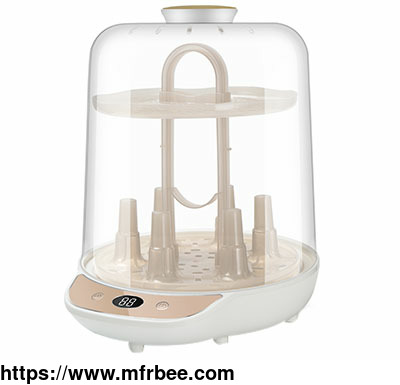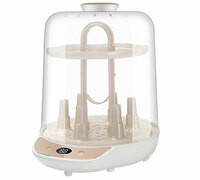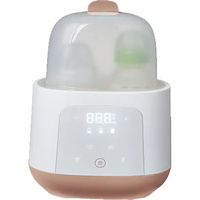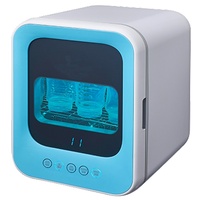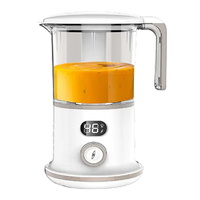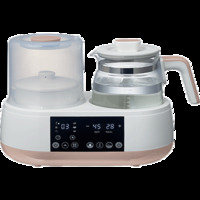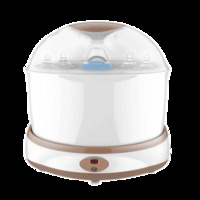Bottle Sterilizer
Specifications
Protecting and improving the health of children is of fundamental importance. Bottle sterilizers make what used to be a time-consuming task as easy as pushing a button. When sterilizing your
bottles, it is imperative that they be cleaned thoroughly first. Sterilization then is an extra step that guarantees all bacteria on the bottle has been killed. It does not replace a thorough
cleaning. Remove the bottles from the sterilizer only before feed time. Keep the sterilizer covered with a lid until you need a bottle, to keep the feeding equipment free of germs.
How to sterilize the baby bottles?
Microwave Steam Sterilizer
Boiling
It is the most common method of sterilization. This is simple but make sure that the bottles, nipples and other parts are safe to boil.
Microwave Steam Sterilizer
Cold Water Sterilizing
For cold water sterilization, you have to use sterilizing solution or sterilization tablet
diluted in cold water. These are effective against bacteria but can last only for 24 hours.
Microwave Steam Sterilizer
Steam Sterilizing
This method involves electric or microwave sterilizer, is an effortless and quick process. You must follow the manufacturer’s guidelines to sterilize through this method.
Microwave Steam Sterilizer
Sterilizing With UV light
Ultraviolet light can purify water by killing bacteria, viruses, and mold. However, the technology is being used for baby products as well.
When should you sterilize a baby bottle?
Bottle Sanitiser
If the bottle is new
It's always advised to give it a cursory sterilization when a new bottle arrives in your home. There’s no telling if other hands have touched the nipple, or if it fell on the floor. To be safe,
give it a boil or a bleach clean to ensure it’s pristine.
If the bottle is second-hand or borrowed
In both of these situations it’s crucial that you sanitize any of your baby’s feeding items, not only to get rid of any lingering bacteria from the previous owner, but to ensure that none others
were picked up while in storage or on the second-hand shelves.
Bottle Sanitiser
If you do not have access to clean drinking water
In most cases and in most countries, municipal drinking water is safe. However, if your drinking water is in question—or if you are traveling to an area where you are unsure if the drinking water
is safe—you should take precautions and sterilize your child's bottle after every use.
If your young baby attends daycare
Since your little one comes in contact with more people at daycare (and there's the rare but real risk bottles could get switched), you'll probably want to sanitize your baby's bottles after
every time baby attends daycare.
As one of the bottle sterilizer manufacturers, JOYSTAR provides twin bottle warmer, formula water kettle, baby bottle sterilizers for sale, milk bottle sterilizer, feeding bottle sterilizer, bottle
sanitizer, breastfeeding supplies, etc. For bottle sterilizer price and types of baby bottle sterilizers / methods of sterilizing baby bottles, please feel free to contact us!
- Country: China (Mainland)
- Business Type: Manufacturer
- Market: Africa
- Address: 7 Xingye Road, Tooling Town,Shapu,Jun'an,Shunde,Foshan,Guangdong,China
- Contact: joystarchina .com
